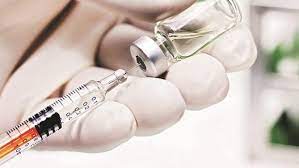Introduction
Importance of Proper Storage
Storing syringes correctly is crucial for maintaining their effectiveness and ensuring patient safety. Proper storage helps preserve the sterility and functionality of syringes, which is essential in both healthcare settings and home use. Mismanagement of storage conditions can lead to contamination, compromised performance, and increased risk of infection.
Effects on Syringe Performance
The performance of a syringe can be significantly affected by improper storage. Syringes that are not stored under recommended conditions may experience degradation of materials, resulting in a higher likelihood of malfunctions. Such issues can have serious consequences, particularly in medical scenarios where precision and cleanliness are paramount.
Ideal Storage Conditions
Temperature and Humidity Control
Syringes should be stored in a controlled environment where temperature and humidity levels are kept within specified ranges. Typically, syringes should be stored at room temperature, away from extreme heat or cold. Excessive temperatures can cause the materials in the syringes to degrade, while high humidity levels can increase the risk of mold and other contaminants. A stable environment helps maintain the integrity of the syringe components and ensures their reliable performance.
Protecting from Contamination
To maintain sterility, syringes should be stored in clean, dry areas that are free from dust, chemicals, and other potential contaminants. It is crucial to keep syringes in their original packaging until they are needed. The packaging is designed to protect the syringes from exposure to environmental factors that could compromise their sterility.
Storage Best Practices
Using Sterile Packaging
Syringes should always be kept in their sterile packaging until use. This packaging is designed to ensure that the syringes remain free from contaminants. Avoid opening the packaging until you are ready to use the syringe, as exposure to the environment can compromise sterility. If the packaging is damaged or compromised, the syringe should not be used.
Avoiding Direct Sunlight and Heat
Exposure to direct sunlight and heat sources can negatively impact the quality of syringes. UV light and high temperatures can cause the materials in syringes to deteriorate, affecting their functionality and safety. Store syringes in a cool, dark place to protect them from such exposure. Using a dedicated storage cabinet or drawer can help shield syringes from light and heat sources.
Handling and Preparation
Checking for Damage
Before using a syringe, it is important to inspect it for any signs of damage or degradation. Check for any cracks, discoloration, or other abnormalities in the syringe. If any issues are detected, the syringe should be discarded and not used, as damaged syringes can pose serious health risks.
Proper Handling Techniques
When handling syringes, always use clean hands and avoid touching the sterile parts of the syringe. If possible, use gloves to maintain cleanliness and prevent contamination. Proper handling techniques help ensure that the syringes remain in a sterile condition and are safe to use when needed.
Conclusion
Proper storage of syringes is vital for maintaining their effectiveness and ensuring patient safety. By adhering to ideal storage conditions, following best practices for storage, and employing correct handling techniques, you can extend the shelf life of syringes and preserve their sterility. This attention to detail helps prevent contamination and ensures that syringes perform reliably, supporting safe and effective medical care.
